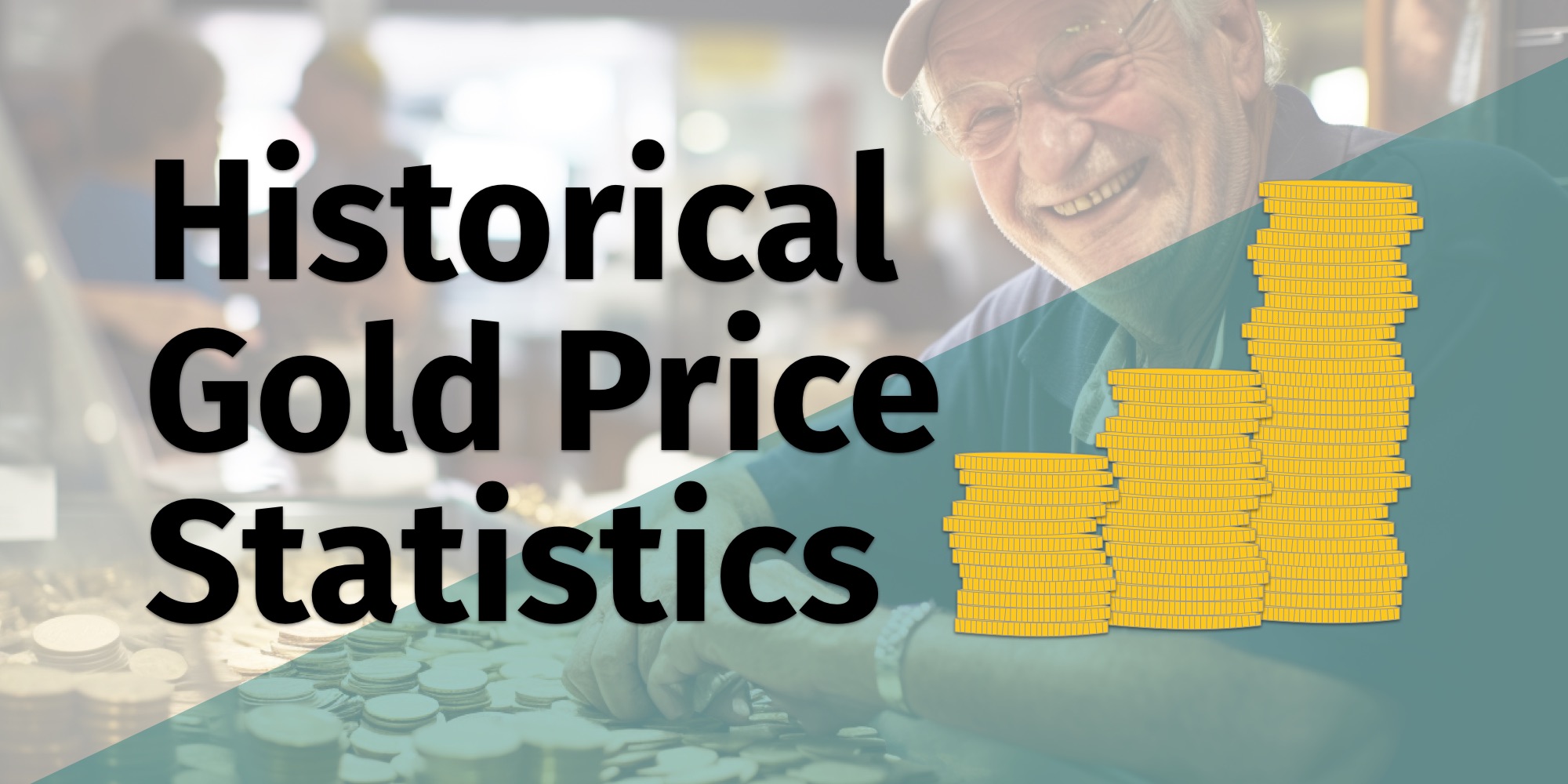Key Takeaways:
- As of December 1, 2023, the price of gold was $2,039.40 per ounce. This reflects a price increase of nearly 12% since early January of that year.
- One of the biggest drivers of gold prices is currency value. A weak dollar makes gold less expensive for international buyers and can lead to increased gold prices.
- Over the past one hundred years, monthly gold prices peaked at $2,675.95 (adjusted for inflation) per ounce in January 1980. Gold prices have not dipped below $1,000 since September 2007, when factoring in inflation.
- Gold is referred to as a “safe-haven asset” because it generally performs well during recessionary periods. Its price has increased by the end of four out of the last seven recessions.
Gold prices are influenced by many interrelated factors, including demand from central banks, interest rates, inflation, the political environment and monetary policies. Over the past one hundred years, monthly gold prices peaked at $2,675.95 (adjusted for inflation) per ounce in January 1980. Gold reached its highest value in 2023 on December 4, when the price was $2,115.10.
Gold Overview
Gold was first used for coins in Asia Minor around 2,800 years ago, though it had been commonly incorporated into art and religious artifacts for millennia prior. It is one of the most versatile and important metals mined and traded today, with manifold uses in jewelry, technology, financial regulation and investment.
The U.S. formerly followed the “gold standard” as its monetary system, in which a fixed price was set for gold. Although this was gradually abandoned, investors and consumers still leverage gold’s performance during economic downturns. Gold prices are influenced by many factors, including central bank demand, interest rates, inflation, geopolitical developments and monetary policies.
Currency value is one of the biggest drivers of gold prices; a weak dollar makes gold cheaper for international buyers, which increases gold’s price. Conversely, a stronger dollar causes gold to be more expensive for international buyers, which can lead to depressed gold prices.
Gold Prices vs. the U.S. Dollar
As of December 1, 2023, the price of gold was $2,039.40 per ounce, while the U.S. Dollar Index (USDX), which measures the value of the U.S. dollar relative to six foreign currencies, was 101.33. Gold prices increased by 11.8% from January to December 2023, while the USDX depreciated by about 0.75% over the same period.
Gold typically has an inverse relationship to the U.S. dollar. As the dollar’s value goes up, the value of gold goes down. The weaker the U.S. dollar, the greater the value of gold.
Gold Prices Over Time
Gold prices fluctuate frequently.
- Over the past fifty years, gold prices peaked at $2,675.95 (adjusted for inflation) per ounce in January 1980 and remained above or near $2,000 per ounce all year.
- Inflation-adjusted gold prices dipped below $1,000 in September 1984 and remained depressed for a couple of years. They then resurged from the summer of 1986 until early 1989, staying above $1,000 for that period.
- Gold prices generally remained below $1,000 from February 1989 until the onset of the Great Recession in late 2007. They have not dipped below $1,000 per ounce since.
Gold Price During Recessions
Gold is referred to as a “safe-haven asset” because it tends to perform well during recessionary periods, even when other forms of investment might not. The U.S. experienced seven recessions over the past fifty years; gold prices increased over the course of four.
- Most recently, gold prices increased immediately after the COVID-19 pandemic became a recognizable threat in America. This brief recession lasted from February to April 2020, during which gold prices increased by 6.5%.
- During the Great Recession, which lasted from December 2007 to June 2009, gold prices increased by 13.3%.
- In the recession from March to November 2001, which was caused by a combination of the dot.com collapse and the attacks of September 11, gold prices increased by 4.3%.
- Gold’s most dramatic recession-era surge occurred during the recession from 1973 to 1975, in which gold prices jumped by 62.8%.
FAQs
How can I invest in gold?
There are many ways to invest in gold. You can buy gold in the form of gold bars or coins from gold dealers. Alternatively, you can open a gold IRA, buy stock in a gold mining company or buy shares of gold exchange-traded funds, among other investment options.
What is the highest price of gold in history?
The price of gold hit $2,675.95 (adjusted for inflation) per ounce in January 1980, which was the highest gold price in the past 100 years. Gold’s highest price in 2023 was $2,115.10, which it hit on December 4.
What is the average 10-year return on gold?
As of December 2022, gold had a 10-year average return of 0.92% compared with a 12.44% return on U.S. stocks; a 5.16% return on European, Australasian and East Asian stocks; a 1.81% return on emerging market stocks; and a 1.06% return on the U.S. bond aggregate.
Sources
- Cartwright M. “Gold in Antiquity.” World History Encyclopedia. Evaluated Dec. 18, 2023.
- World Gold Council. ”Gold Market Structure and Flows.” World Gold Council. Evaluated Dec. 18, 2023.
- Hergt B. “Gold prices during and after the Great Recession.” U.S. Bureau of Labor Statistics. Evaluated Dec. 18, 2023.
- Goldprice.org. “Gold Price History.” Goldprice.org. Evaluated Dec. 18, 2023.
- Macrotrends. “Gold Prices - 100 Year Historical Chart.” Macrotrends. Evaluated Dec. 18, 2023.
- Statista. “10-year average return of gold and other assets worldwide as of 2022.” Statista. Evaluated Dec. 21, 2023.
- Dong T, Powell F. “Gold price today.” USA TODAY. Evaluated Dec. 20, 2023.
- Yahoo Finance. “ICE US Dollar Index - Index - C (DX-Y.NYB).” Yahoo Finance. Evaluated Dec. 20, 2023.
- Federal Reserve Economic Data. “Dates of U.S. recessions as inferred by GDP-based recession indicator.” Federal Reserve Bank of St. Louis. Evaluated Jan. 2, 2023.
